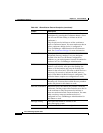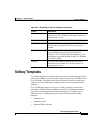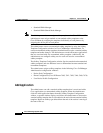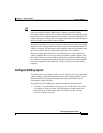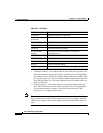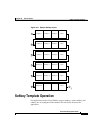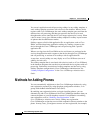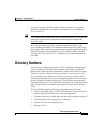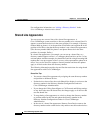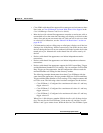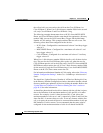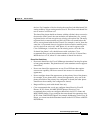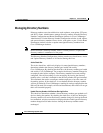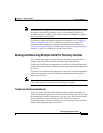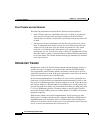
40-25
Cisco CallManager System Guide
OL-7135-01
Chapter 40 Cisco IP Phones
Directory Numbers
if you want to assign a specific directory number to a phone or if you plan to
implement authentication or encryption, as described in Cisco CallManager
Security Guide 4.1.
Tip Cisco CallManager automatically disables auto-registration if you configure the
clusterwide security mode for authentication and encryption through the
Cisco CTL client.
If you do not use auto-registration, you must manually add phones to the
Cisco CallManager database or use the Bulk Administration Tool (BAT). BAT, a
plug-in application, enables system administrators to perform batch add, modify,
and delete operations on large numbers of Cisco IP Phones. Refer to the Bulk
Administration Tool Guide for Cisco CallManager for detailed instructions on
using BAT.
Directory Numbers
Using Directory Number Configuration in Cisco CallManager Administration,
you can configure and modify directory numbers (lines) that are assigned to
phones. Keep in mind, however, that directory numbers do not always associate
with devices (see the “Managing Directory Numbers” section on page 40-30).
You can configure up to 200 calls for a line on a device in a cluster, with the
limiting factor being the device. As you configure the number of calls for one line,
the calls available for another line decrease. Cisco IP Phones that support the
multicall display (such as a Cisco IP Phone 7960) support up to 200 calls per DN
and 2 calls per DN for non-multicall display devices (such as Cisco IP Phone
7905).
The Cisco IP Phone displays the following information about each line:
• Unique call identifier (from 1 to 200). This identifier is consistent across all
multicall display devices that have a shared line appearance.
• Call select status, an icon which shows the state of the currently selected call.
• Call information such as calling party or called party.
• Call state icon such as connected or hold.
• Duration of a call




